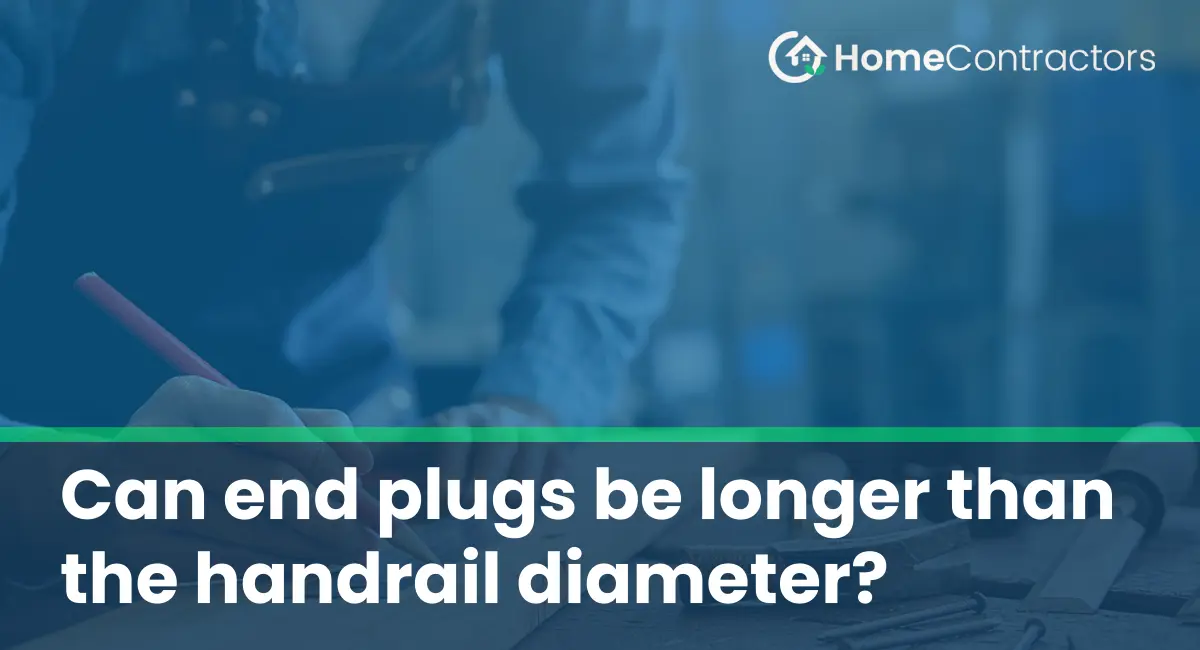Handrails are an essential safety feature in any building, providing support and stability for individuals while navigating stairs, ramps, or any other elevated areas. To ensure the longevity and functionality of a handrail, it is necessary to protect its open ends from damage and corrosion, which can be achieved using end plugs. These plastic or metal fittings are designed to fit snugly into the ends of the handrail, preventing any foreign objects or substances from infiltrating the railing system.
However, a common question that arises when it comes to installing handrails is whether the end plugs can be longer than the handrail diameter. In this article, we will delve into this query and explore the considerations to keep in mind when choosing end plugs for your handrail system.
Understanding the Purpose of End Plugs
Before discussing whether end plugs can be longer than the handrail diameter, it is crucial to comprehend the significance of these fittings. The primary purpose of end plugs is to prevent the accumulation of dirt, moisture, and debris within the hollow cavity of the handrail. By sealing off the ends, end plugs help to maintain the structural integrity and aesthetics of the handrail, reducing the risk of corrosion and deterioration over time. Additionally, end plugs can also enhance safety by preventing accidental injury or entrapment of fingers or clothing.
Matching End Plug Size to Handrail Diameter
When choosing end plugs for your handrails, it is essential to ensure a proper fit between the two. Ideally, the end plug should fit snugly within the handrail without being too loose or tight. Therefore, it is generally recommended to select end plugs with a diameter that matches the handrail. This ensures a secure and seamless connection between the handrail and end plug, guaranteeing maximum protection and longevity.
The Issue of Length
While matching the end plug diameter to the handrail is crucial, the length of the end plug is also an important consideration. In most cases, the length of the end plug should not exceed the diameter of the handrail. Overhanging end plugs can pose certain issues, such as interfering with the handrail’s functionality, causing discomfort or impediment for users, or compromising the overall aesthetics of the installation.
However, there may be situations where using end plugs that are slightly longer than the handrail diameter may be necessary or desirable. Factors such as the handrail material, the environment, or specific installation requirements can influence the decision to lengthen the end plugs. In such cases, it is essential to carefully assess and mitigate any potential risks by considering the following aspects:
- Clearance: Ensure that the lengthened end plugs do not obstruct any clearance required for users to comfortably grip the handrail. The end plug should not cause discomfort or impede the grip in any way.
- Accessibility: Verify that the extended end plugs do not hinder the accessibility of the handrail, particularly for individuals with mobility impairments or those using specialized aids such as wheelchair attachments.
- Aesthetics: Consider the overall visual impact of lengthened end plugs on the appearance of the handrail installation. If the longer end plugs are visually distracting or unappealing, alternative solutions should be explored.
- Compatibility: Confirm that the extended end plugs do not interfere with any other components of the handrail system, such as brackets, brackets, or connectors. Make sure the extended length does not compromise the structural integrity of the entire system.
Consulting Professionals
When in doubt about whether end plugs longer than the handrail diameter should be used, it is always advisable to consult professionals. Experienced handrail manufacturers or installers can provide guidance based on their expertise to ensure the optimal functionality, safety, and aesthetics of the handrail system.
While it is generally recommended to choose end plugs that match the handrail diameter, there may be instances where slightly longer end plugs are necessary. However, careful consideration of factors like clearance, accessibility, aesthetics, and compatibility is crucial to prevent any potential issues. By consulting professionals, you can confidently make informed decisions regarding end plugs for your handrail system. Remember, safety and functionality should always be prioritized to create a secure and reliable handrail installation.
